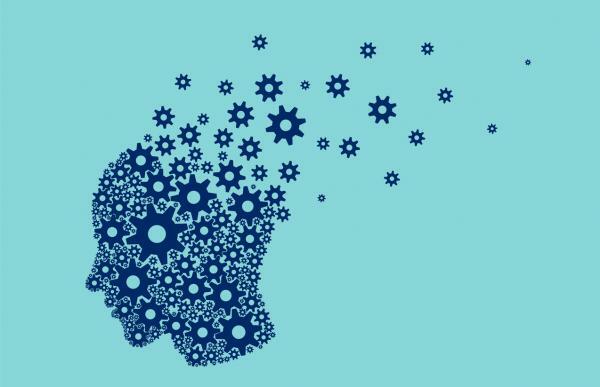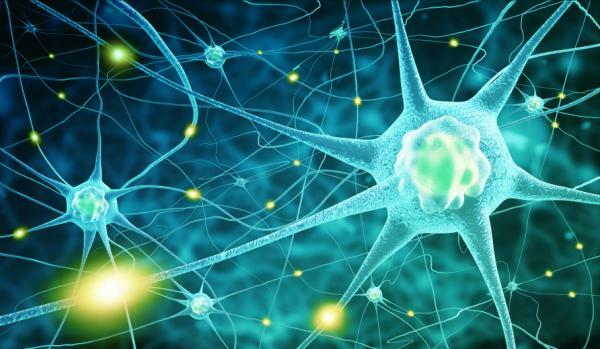
Schizophrenia is one of the disorders that most interferes with the quality of life of people who suffer from it. For this reason, it is very important to know their different presentations and the most effective treatments for them.
At present, the classification of the different types of schizophrenia has been neglected. However, there are numerous clinicians who detail that it is of special interest to know the characteristics of the different classifications of schizophrenia for the correct treatment of patient. The different forms of schizophrenia that are presented are the paranoid type, hebephrenia, undifferentiated type, residual and catatonic.
In this Psychology-Online article, we will help you understand hebephrenic schizophrenia, one of the subtypes of schizophrenic disorder. If you want to know more about this, keep reading this article: Hebephrenic Schizophrenia: Causes, Symptoms and Treatment.
Index
- Definition of hebephrenic schizophrenia
- Causes of hebephrenic or disorganized schizophrenia
- Symptoms of hebephrenic or disorganized schizophrenia
- Treatment for hebephrenic or disorganized schizophrenia
Definition of hebephrenic schizophrenia.
Hebephrenic schizophrenia is also known as disorganized schizophrenia and it is characterized mainly by a marked disturbance of speech and behavior, with a flat and inappropriate presentation of affect.
The term hebephrenia was introduced in 1871 by the psychiatrist E. Hecker, later changing the name from hebephrenic schizophrenia to disorganized schizophrenia. By hebephrenia is meant a morbid process, which, beginning at the time of puberty, leads through a slow development, although sometimes somewhat faster, to a state of mental weakness. The essence of the condition does not change, whether the disease process evolves in the simplest way as a progressive deterioration and silent, or that evolves in a more lively way, accompanied by depressive symptomatic pictures, of excitement, of temporary delusional ideation, etc.
Causes of hebephrenic or disorganized schizophrenia.
At present, the causes of disorganized schizophrenia are unknown. Despite this, it is known that it has an early onset, that is, it appears between 15 and 25 years and a insidious, generally, the onset of the disease evolves slowly, with a continuous course and without remissions significant. Usually, this subtype of schizophrenia is also associated with a premorbid, impoverished personality and there is a strong genetic componentThe development of this mental disorder is more likely if the person has a family history of depression or psychosis.
Symptoms of hebephrenic or disorganized schizophrenia.
According to the DSM-IV, the main characteristics of hebephrenic schizophrenia are disorganized language and behavior and flattened or inappropriate affectivity. The presence of delusions and hallucinations, are fragmented and are not organized around a coherent theme and are not the predominant symptoms of the disorder, indicating that the positive symptoms of schizophrenia are not the most representative of said disorder. The signs and symptoms of hebephrenic or disorganized schizophrenia include the following:
- Early start. The early onset of hebephrenic schizophrenia was considered one of the most representative aspects of this subtype of schizophrenia. For this reason, this subtype was called hebephrenic, since the etiology of the word hebephrenia comes from the Greek (“Hébé”) which means “young, youth”.
- Disorganized language. Language is one of the most affected components in hebephrenic schizophrenia. There is a marked alteration in the production of oral language, with speech disorganization, frequent blockages, loss of the common thread and the associative capacity, change of subject spontaneously and affecting semantics and language organization, leading to cognitive deficits important. These language limitations sometimes cause a tendency towards social avoidance, in an attempt to decrease environmental stimulation.
- Behavioral disorganization. Behavioral disorganization refers to the difficulty of orienting towards a goal, which can lead to a disruption of the ability to carry out activities of daily life, such as showering, dressing, preparing food... In addition to this, a behavior may appear incongruous or associated features including grimacing, mannerisms, and other behavioral oddities, such as socially behaving inadequate.
- Flattened or inappropriate affectivity. The affective alterations that occur in hebephrenic schizophrenia are the same limitations found in schizophrenic disorder. There is an affective flattening, giving rise to a null reaction to emotional stimuli, giving a reduction in the intensity of emotional expression or expressing incoherent emotions about the context. On the other hand, they reduce the ability to persist or start an activity, limit the lack of will and make it difficult for the person to feel pleasure with the activities that used to feel.
The set of signs and symptoms of hebephrenic schizophrenia give rise to a predominance of negative symptoms. Faced with this symptomatology, a worse prognosis is established, due to the rapid appearance of the symptoms, which cause a considerable increase in behavioral, cognitive and emotional In addition to this, it should be noted that negative symptoms respond to antipsychotic medications worse than positive symptoms.
Treatment for hebephrenic or disorganized schizophrenia.
Any subtype of schizophrenia, in this case specifically, hebephrenic schizophrenia, requires a long-term treatment, in many cases for life, although there is no presentation of the symptom. The most important thing in treatment is to be able to perform a multi-disciplinary intervention with the different disciplines in mental health: psychiatry, psychology, social worker, nursing, ...
First of all, a full assessment should be performed to diagnose schizophrenia. In general, the treatment of hebephrenic schizophrenia tends to begin in the psychiatric discipline, with the administration of antipsychotics, in order to control signs and symptoms effectively, using the lowest possible dose. The use of antidepressant and anxiolytic drugs is also frequent. The stabilization of symptoms makes it possible to carry out psychosocial therapy.
In some cases, hospitalization is required, during periods of crisis or severe symptoms. Hospitalization has the objective of guaranteeing the safety of the person, since due to its limitations it is You may neglect basic needs habits, such as a good diet, sleep rhythm, or hygiene. Another possible difficulty is that the patient does not respond adequately to medications administered, in this case a possible alternative is electroconvulsive therapy, also useful in the depression.
Faced with stabilization of symptoms, it is appropriate to start a psychosocial intervention. However, the beginning of the intervention does not imply the suppression of the administration of the drugs. The psychological therapies and intervention techniques The most common social and medical conditions for treating hebephrenic schizophrenia are the following:
- Individual therapy: individual therapy aims to help the patient identify the symptoms, with the objective of establishing strategies against possible relapses and thus, being able to control the disease. On the other hand, it offers tools to be able to controlling stress and the normalization of thought patterns is worked on.
- Social skills training: in hebephrenic schizophrenia, work with social skills is very important, due to the strong impact of negative symptoms. Faced with this, he focuses his work on improving communication, social interactions, the identification of emotions and their contextualization.
- Family therapy: As previously detailed, negative symptoms can cause a strong impact on the environment, since the patient reacts with an avoidant component. This factor can harm the family nucleus, so it is important to provide support and information to families against this disorder. In addition to this set of interventions, many people with this disorder require daily help. For this, there are different associations that provide the necessary support for these people, helping them to find and keep a job, housing, crisis situations, self-help groups.
This article is merely informative, in Psychology-Online we do not have the power to make a diagnosis or recommend a treatment. We invite you to go to a psychologist to treat your particular case.
If you want to read more articles similar to Hebephrenic schizophrenia: causes, symptoms and treatment, we recommend that you enter our category of Clinical psychology.
Bibliography
- AMERICAN PSYCHIATRIC ASSOCIATION (APA). (2002). Diagnostic and Statistical Manual of Mental Disorders DSM-IV-TR. Barcelona: Masson.
- Accatino, L. (2012). Language disorders in Schizophrenia Language disorders in Schizophrenia. Rev. Memorize, 9, 1-8.
- Hoche, A. (2009). The schizophrenic process. Hebephrenic form. Neuropsychiatric Clinic, 15, 14.
- Martín, F., et at. (2008). Intellectual and cognitive impairment: reflections on a case of disorganized schizophrenia. Quad. Neuropsych, 2, 8.


